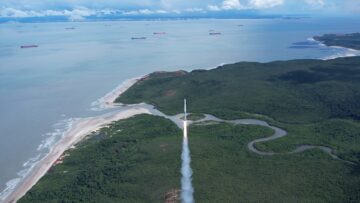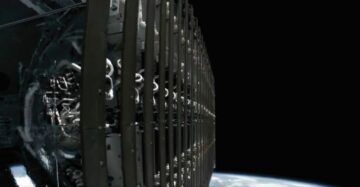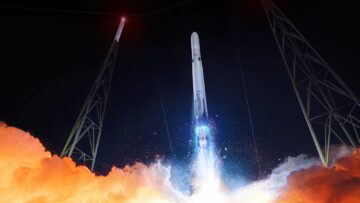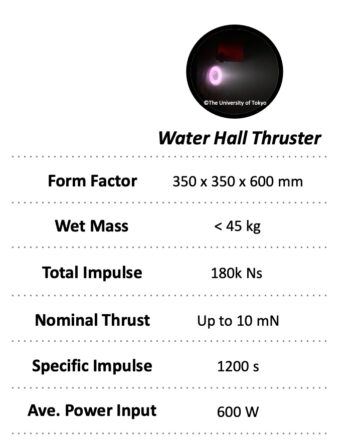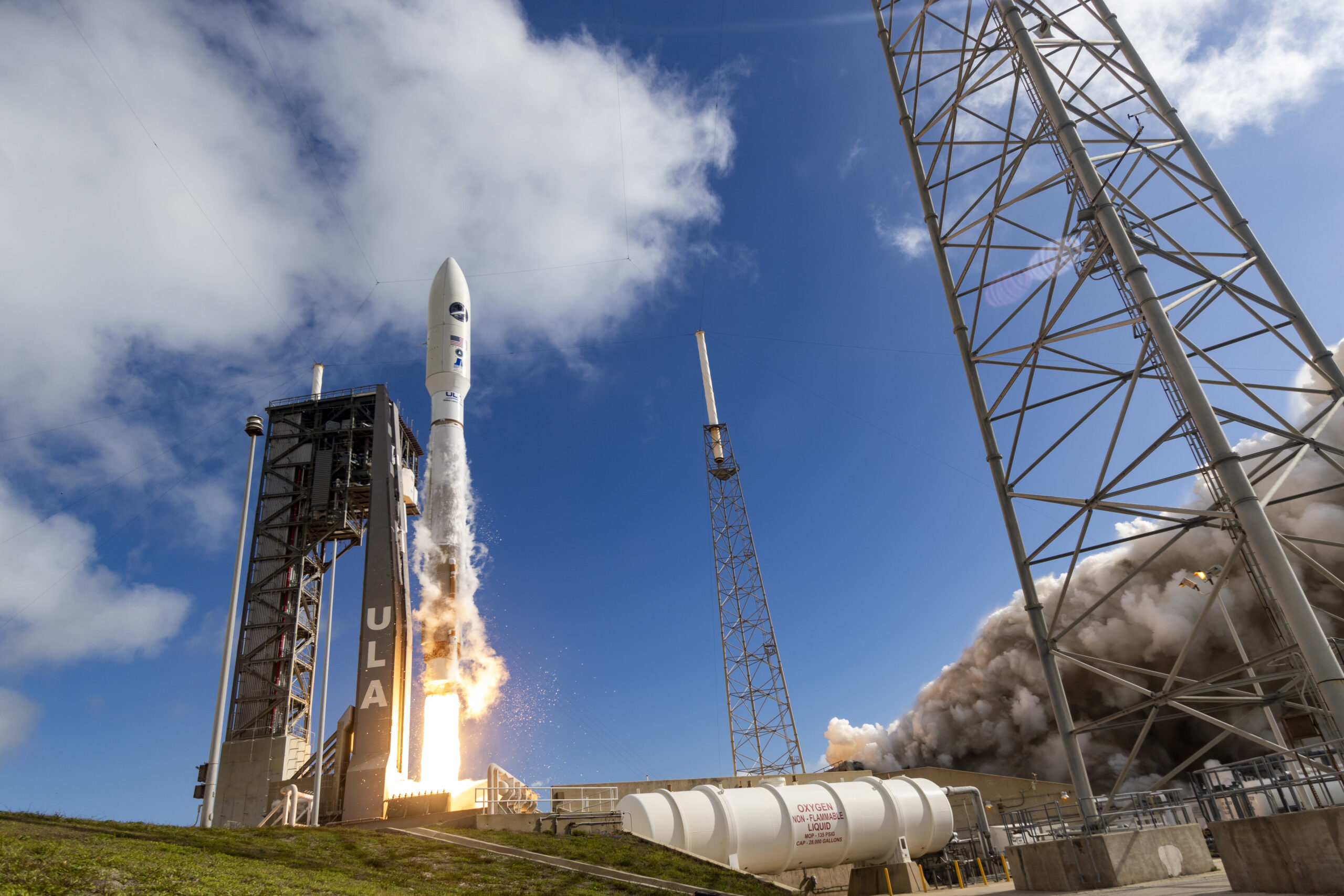
The selection of United Launch Alliance and SpaceX in 2020 as U.S. national security launch providers was hailed as the dawn of a new era of assured access to space, thanks to a competitive commercial industry.
As it prepares to award the next round of National Security Space Launch (NSSL) contracts, the Space Force is no longer comfortable relying on just two companies.
The U.S. Air Force four years ago insisted it only wanted to work with two launch providers despite pressure from new entrant Blue Origin and its congressional supporters to add a third contractor to NSSL Phase 2. Military officials at the time argued that there was insufficient demand to justify three providers and that it would be too costly for the government to subsidize that many.
The environment has since changed, and the Space Force now finds itself in the unfamiliar position of having to compete for access to commercial rockets.
While a key goal of NSSL Phase 2 was to prop up the domestic launch industry and increase competition, in NSSL Phase 3, the Space Force is trying to lock-in supply amid concerns about growing commercial demand.
“We wanted to make sure that we essentially hedged against the launch scarcity that could happen,” said Col. Chad Melone, chief of launch procurement and integration at the Space Systems Command.
A launch supply crunch is being forecasted in the latter part of this decade when Amazon will be deploying its Project Kuiper internet constellation on ULA, Blue Origin and Arianespace rockets. NSSL Phase 3 will procure launch services for missions to be launched in the 2027-2032 timeframe.
Whereas ULA and SpaceX are splitting just 35 missions in NSSL Phase 2, the Space Force is forecasting as many as 88 in Phase 3, including 30 that will be set aside for smaller rockets. A third heavy-lift provider will be sought to challenge ULA and SpaceX.
Col. Douglas Pentecost, deputy program executive officer of assured access to space, said the Phase 3 strategy also seeks to protect the government from industry volatility.
He alluded to the small launch market, where a seemingly thriving enterprise today could vanish tomorrow. “There could be a grounding event, or something happens to the company. You never know.”
To attract more competitors, the Space Force split NSSL Phase 3 into two tracks. Lane 1 caters to smaller launchers and will be open to any provider that has flown a payload to orbit. Lane 2 requires heavy-lift launchers that can fly payloads to the most challenging orbits. A new entrant can win a Lane 2 contract if it submits a credible roadmap.
“We are being very broad in our interpretation of how we’re getting after assured access by opening up additional beachheads,” Melone said.
The Lane 2 portion of NSSL creates a major opportunity for Blue Origin’s still-in-development New Glenn. The government will pay each Lane 2 provider up to $100 million annually to cover NSSL-unique expenses. This would help Jeff Bezos’ company, for example, build a West Coast launch pad.
Having three providers in Lane 2 would make the Space Force less dependent on SpaceX — currently the only company able to fly NSSL payloads while ULA’s Vulcan remains hobbled by delays and is now expected to conduct its first launch later this year. To date, the Space Force has assigned 15 missions to ULA under Phase 2. Those missions would start flying in 2024.
In the Phase 3 strategy, said Melone, “we looked at the warfighter needs and what is going on in the industry writ large.”
Lane 1 aims to leverage medium-lift rockets currently in development by companies like Rocket Lab and Relativity. Lane 1 missions will require flying 15,000 pounds (6,800 kilograms) to low Earth orbit, and companies can propose to launch those missions in single or multiple flights. That would open the door to small rockets in the one-ton category like Firefly’s Alpha.
The main customer of Lane 1 missions will be the Space Development Agency, which plans to deploy a large LEO constellation over the next several years.
Melone acknowledged that there are no guarantees that the Phase 3 policy gambit will produce the intended results. Still, the Space Force is determined to leverage the commercial industry as much as possible. “There are still a lot of uncertainties out there,” he said.
This article originally appeared in the ‘On National Security’ commentary feature in the August 2023 issue of SpaceNews magazine.
Related
- SEO Powered Content & PR Distribution. Get Amplified Today.
- PlatoData.Network Vertical Generative Ai. Empower Yourself. Access Here.
- PlatoAiStream. Web3 Intelligence. Knowledge Amplified. Access Here.
- PlatoESG. Automotive / EVs, Carbon, CleanTech, Energy, Environment, Solar, Waste Management. Access Here.
- PlatoHealth. Biotech and Clinical Trials Intelligence. Access Here.
- ChartPrime. Elevate your Trading Game with ChartPrime. Access Here.
- BlockOffsets. Modernizing Environmental Offset Ownership. Access Here.
- Source: https://spacenews.com/space-force-tries-to-hedge-risk-with-new-launch-strategy/
- :has
- :is
- :where
- $100 million
- $UP
- 000
- 1
- 15%
- 2020
- 2023
- 2024
- 30
- a
- Able
- About
- access
- acknowledged
- add
- Additional
- After
- against
- agency
- ago
- aims
- AIR
- Air Force
- Alliance
- Alpha
- also
- Amazon
- Amid
- and
- Annually
- any
- appeared
- ARE
- argued
- article
- AS
- assigned
- assured
- At
- attract
- AUGUST
- award
- BE
- being
- Blue
- blue origin
- broad
- build
- by
- CAN
- Category
- caters
- challenge
- challenging
- changed
- chief
- Coast
- comfortable
- Commentary
- commercial
- Companies
- company
- compete
- competition
- competitive
- competitors
- Concerns
- Conduct
- Congressional
- contract
- Contractor
- contracts
- costly
- could
- cover
- creates
- credible
- crunch
- Currently
- customer
- Date
- decade
- delays
- Demand
- dependent
- deploy
- deploying
- deputy
- Despite
- determined
- Development
- Domestic
- Door
- each
- earth
- Enterprise
- Environment
- Era
- essentially
- Event
- example
- executive
- Executive Officer
- expected
- expenses
- Feature
- finds
- First
- Flights
- flying
- For
- Force
- four
- from
- Gambit
- getting
- goal
- going
- Government
- Growing
- guarantees
- happen
- happens
- having
- he
- hedge
- Hedged
- help
- How
- HTTPS
- if
- in
- Including
- Increase
- industry
- integration
- intended
- Internet
- interpretation
- into
- issue
- IT
- ITS
- itself
- jpg
- just
- Key
- Know
- lab
- Lane
- large
- later
- launch
- launched
- LEO
- less
- Leverage
- like
- longer
- looked
- Lot
- Low
- magazine
- Main
- major
- make
- many
- Market
- Military
- million
- missions
- more
- most
- much
- multiple
- National
- national security
- needs
- never
- New
- next
- no
- now
- of
- Officer
- officials
- on
- only
- open
- opening
- Opportunity
- or
- Orbit
- Origin
- originally
- our
- out
- over
- pad
- part
- Pay
- phase
- plans
- plato
- Plato Data Intelligence
- PlatoData
- policy
- position
- possible
- pounds
- Prepares
- pressure
- procurement
- produce
- Program
- project
- propose
- protect
- provider
- providers
- relativity
- relying
- remains
- require
- requires
- Results
- Risk
- roadmap
- rocket
- round
- s
- Said
- Scarcity
- security
- Seeks
- seemingly
- selection
- Services
- set
- several
- since
- single
- small
- smaller
- something
- sought
- Space
- Space Force
- SpaceNews
- SpaceX
- split
- start
- Still
- Strategy
- supply
- supporters
- sure
- Systems
- thanks
- that
- The
- There.
- Third
- this
- this year
- those
- three
- thriving
- time
- timeframe
- to
- today
- tomorrow
- too
- tracks
- two
- u.s.
- U.S. Air Force
- uncertainties
- under
- unfamiliar
- United
- very
- Volatility
- vulcan
- wanted
- was
- we
- West
- What
- What is
- when
- which
- while
- will
- win
- with
- Work
- would
- year
- years
- you
- zephyrnet

